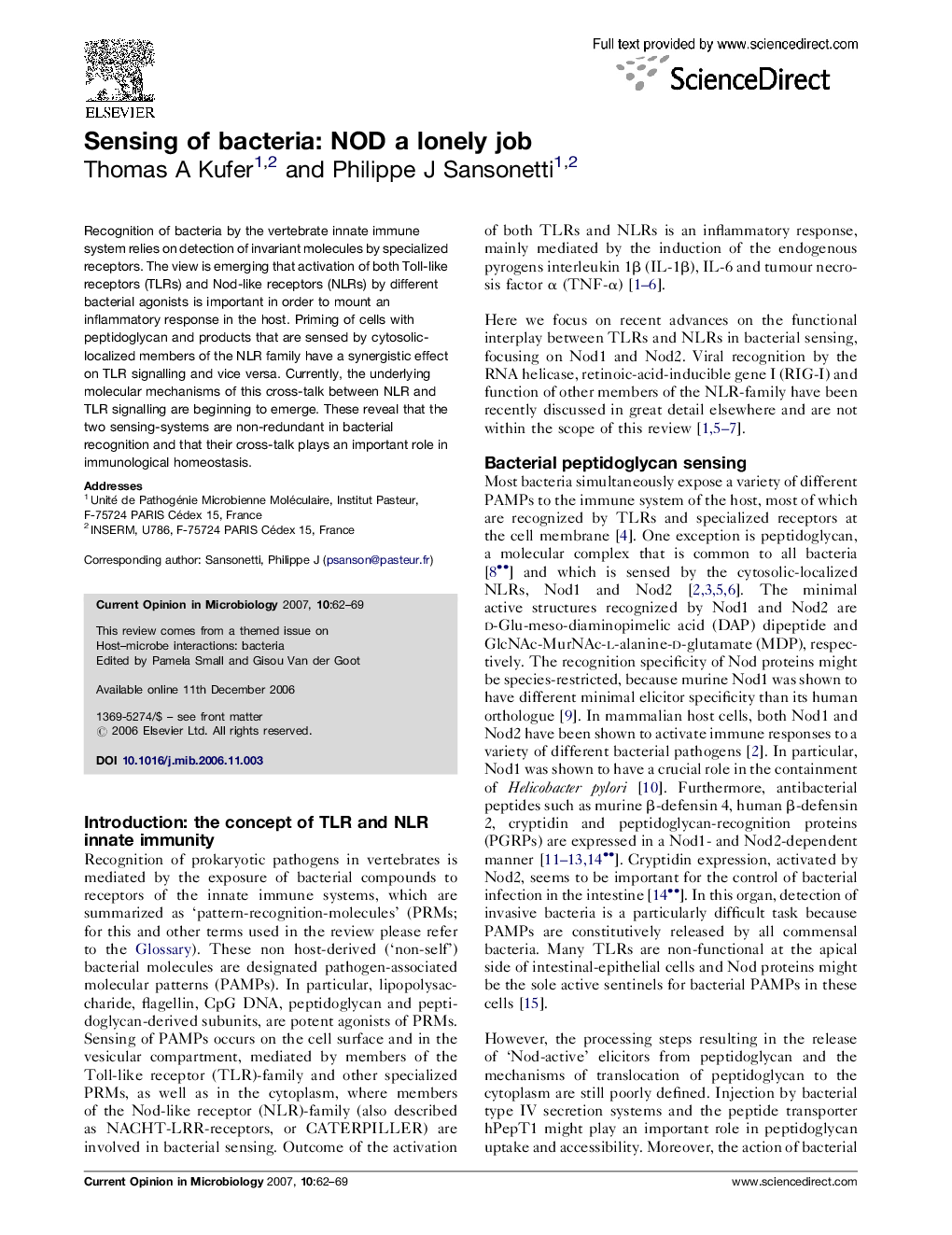| Article ID | Journal | Published Year | Pages | File Type |
|---|---|---|---|---|
| 3399632 | Current Opinion in Microbiology | 2007 | 8 Pages |
Recognition of bacteria by the vertebrate innate immune system relies on detection of invariant molecules by specialized receptors. The view is emerging that activation of both Toll-like receptors (TLRs) and Nod-like receptors (NLRs) by different bacterial agonists is important in order to mount an inflammatory response in the host. Priming of cells with peptidoglycan and products that are sensed by cytosolic-localized members of the NLR family have a synergistic effect on TLR signalling and vice versa. Currently, the underlying molecular mechanisms of this cross-talk between NLR and TLR signalling are beginning to emerge. These reveal that the two sensing-systems are non-redundant in bacterial recognition and that their cross-talk plays an important role in immunological homeostasis.
